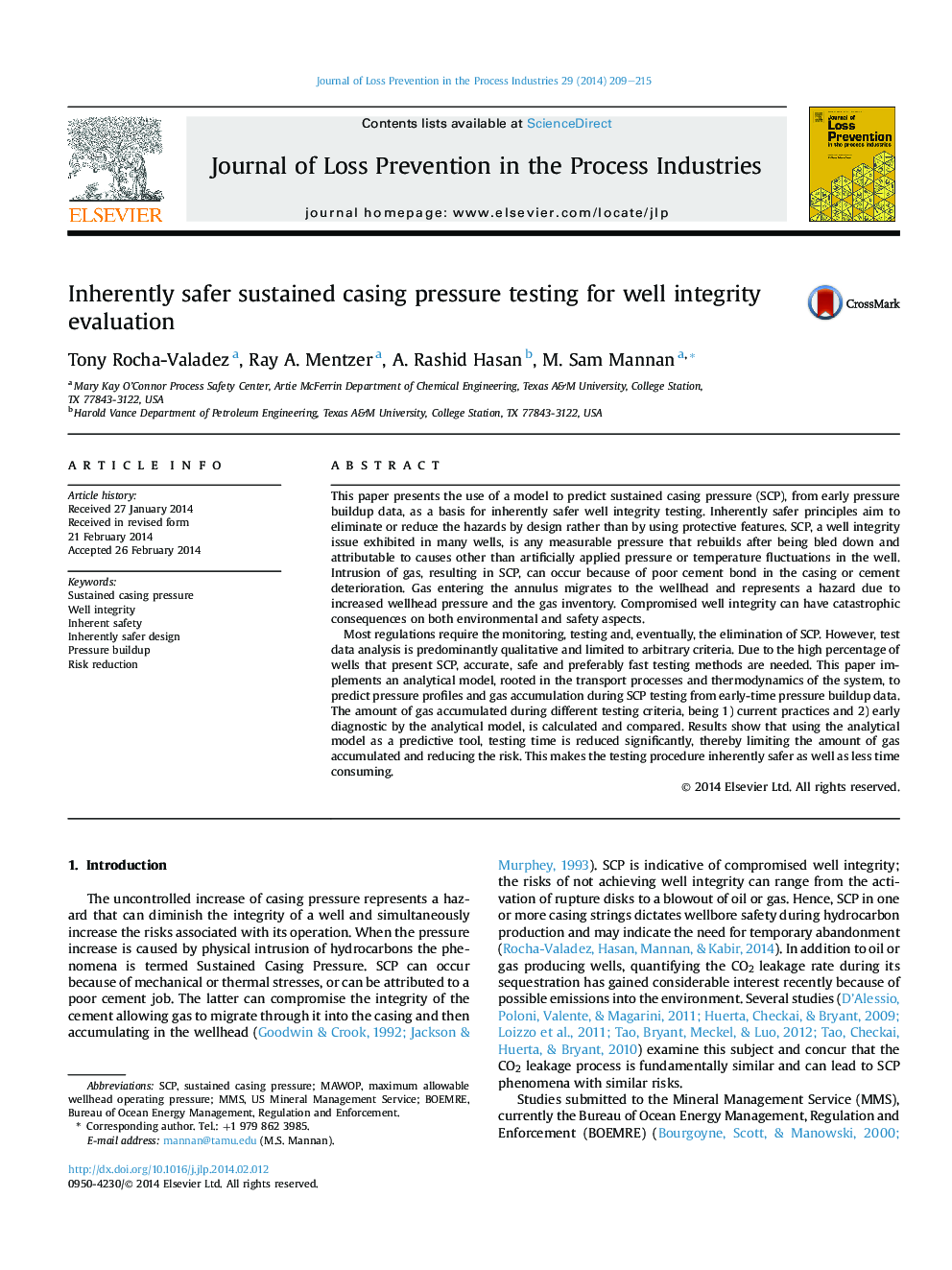| کد مقاله | کد نشریه | سال انتشار | مقاله انگلیسی | نسخه تمام متن |
|---|---|---|---|---|
| 586295 | 1453279 | 2014 | 7 صفحه PDF | دانلود رایگان |
• We present an inherently safer well integrity testing procedure for SCP.
• We used an analytic model to predict sustained casing pressure (SCP).
• New approach is compared against current standards.
• Pressure increase, gas accumulation and testing time are reduced with new approach.
This paper presents the use of a model to predict sustained casing pressure (SCP), from early pressure buildup data, as a basis for inherently safer well integrity testing. Inherently safer principles aim to eliminate or reduce the hazards by design rather than by using protective features. SCP, a well integrity issue exhibited in many wells, is any measurable pressure that rebuilds after being bled down and attributable to causes other than artificially applied pressure or temperature fluctuations in the well. Intrusion of gas, resulting in SCP, can occur because of poor cement bond in the casing or cement deterioration. Gas entering the annulus migrates to the wellhead and represents a hazard due to increased wellhead pressure and the gas inventory. Compromised well integrity can have catastrophic consequences on both environmental and safety aspects.Most regulations require the monitoring, testing and, eventually, the elimination of SCP. However, test data analysis is predominantly qualitative and limited to arbitrary criteria. Due to the high percentage of wells that present SCP, accurate, safe and preferably fast testing methods are needed. This paper implements an analytical model, rooted in the transport processes and thermodynamics of the system, to predict pressure profiles and gas accumulation during SCP testing from early-time pressure buildup data. The amount of gas accumulated during different testing criteria, being 1) current practices and 2) early diagnostic by the analytical model, is calculated and compared. Results show that using the analytical model as a predictive tool, testing time is reduced significantly, thereby limiting the amount of gas accumulated and reducing the risk. This makes the testing procedure inherently safer as well as less time consuming.
Journal: Journal of Loss Prevention in the Process Industries - Volume 29, May 2014, Pages 209–215
